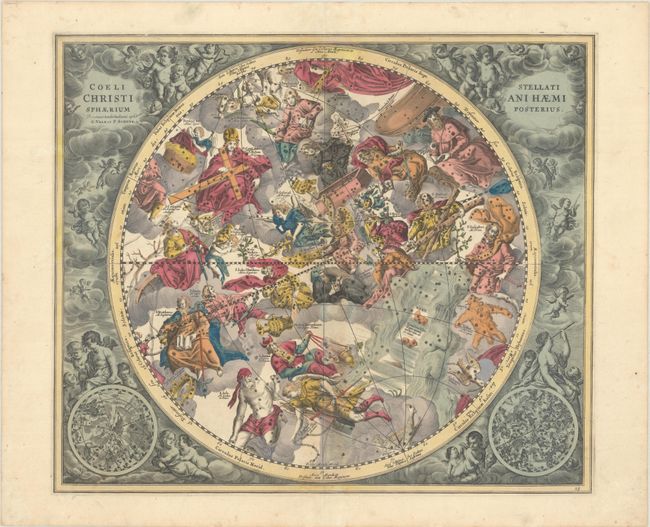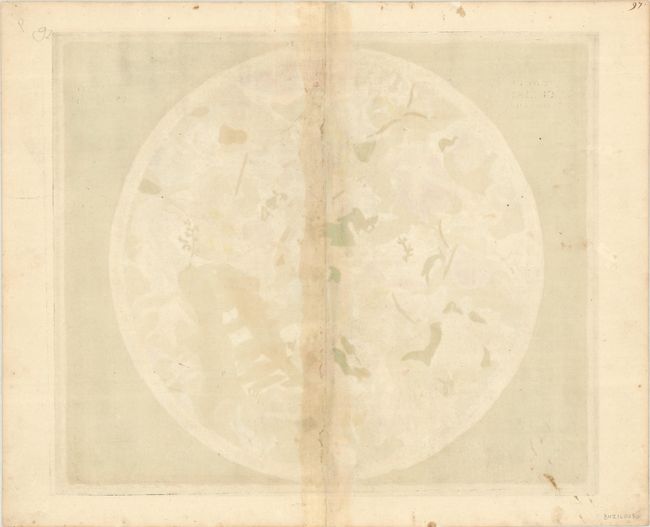Subject: Celestial
Period: 1708 (published)
Publication: Atlas Coelestis seu Harmonia Macrocosmica
Color: Hand Color
Size:
20.2 x 17.3 inches
51.3 x 43.9 cm
The Dutch-German mathematician and cosmographer Andreas Cellarius is best known for his spectacular celestial atlas, the Harmonia Macrocosmica. His atlas contained a description of ancient and contemporary astronomy including the theories of Ptolemy, Copernicus, and Tycho Brahe. The atlas was illustrated with twenty-nine engraved plates that are among the most beautiful celestial charts ever made. The charts include illustrations of the heavens and diagrams of the orbits of the Sun, Moon, and planets according to the different cosmological theories. They were richly adorned with elaborate cartouches and baroque elements such as putti in clouds, shells, garlands, as well as portraits of famous astronomers and astronomical instruments. The Harmonia Macrocosmica was published in 1660, and reissued in 1661 by the Amsterdam publisher Johannes Jansson as a supplement to his Atlas Novus. The plates were reissued again in 1708 by the Amsterdam publishers Gerard Valk and Petrus Schenk.
The constellations on this unconventional celestial chart reflect Christian symbolism. It is based on the work of the early 17th century astronomer, Julius Schiller, who sought to replace the traditional pagan symbols with ones derived from Judeo-Christian sources. Specifically, Schiller replaced the zodiacal constellations with the twelve apostles, the constellations north of the zodiac by figures from the New Testament and the constellations south of the zodiac by figures from the Old Testament. Instead of being projected from the pole, the map is centered on the equinox and the ecliptic bisects the map instead of encircling it. On this chart, the constellation of Sagittarius is represented by Matthew, Aquarius by Judas Thaddeus, Pisces by Matthias, Aries by Peter, and Taurus by Andrew. Other constellations include Mary Magdalene as Cassiopeia, Joseph as Orion, and Cygnus became St. Helena, holding the cross. The river of Eridamus has been replaced by the parting of the Red Sea. This is one of the most unusual charts in the Cellarius compendium.
References: Kanas, pp. 191-94; Van der Krogt (Vol. I) #HM23:1; Warner p. 54, 1D; Whitfield p. 93.
Condition: A
A crisp impression with full contemporary color on a bright sheet with faint toning along the centerfold and marginal foxing.



